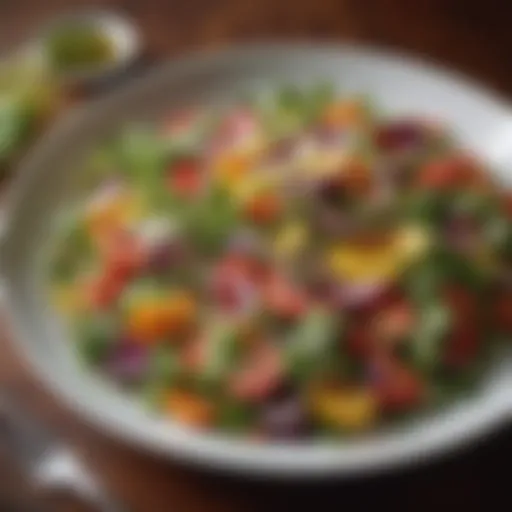Best Leave-In Conditioners for Reviving Damaged Hair
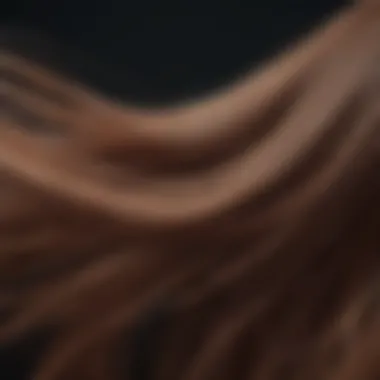

Intro
When it comes to hair care, not all products are created equal. For those battling the aftermath of heat styling, chemical treatments, or environmental stressors, a robust leave-in conditioner spray can be a game changer. These specialized formulas work their magic by providing much-needed moisture, detangling, and protection, transforming lackluster locks into vibrant tresses.
In this comprehensive guide, we’ll dive into the world of leave-in conditioners, particularly those formulated for revitalizing damaged hair. The journey to healthy hair starts with understanding what damage does to our strands. From there, we’ll explore the key features to look for in a leave-in spray, how to apply it correctly, and tips tailored to different hair types. Moreover, we’ll sprinkle in product recommendations that stand out in the crowded market, helping you make an informed decision.
Whether you’re facing issues of dryness, frizz, or breakage, understanding the intricacies of leave-in conditioners can unlock the potential for hair restoration.
Let’s embark on this journey toward luscious locks together!
Understanding Damaged Hair
When it comes to hair care, getting a grasp on the nuances of damaged hair is crucial. Damaged hair isn’t just a cosmetic issue; it can impact how you feel about yourself. Understanding the types of damage, signs to look out for, and proper care can transform your hair from lifeless to lively. So, let’s take a closer look at the nitty-gritty of what constitutes hair damage, so we can move forward to restoring that shine and vitality.
Types of Hair Damage
Chemical Damage
Chemical damage arises from processes such as coloring, perming, or relaxing hair. Each time you treat your hair with these chemicals, you're affecting its structural integrity. The key characteristic of chemical damage is that it often leads to a porous hair shaft. This means your hair can absorb moisture easily, but it also loses it just as quickly. For folks eager to experiment with color or style, understanding this form of damage is essential. It serves as a wake-up call that while the dye might look fabulous, the aftermath could make hair brittle and unmanageable.
The unique feature of this type of damage is that it's typically cumulative; repeated applications can exacerbate the issue. However, the use of leave-in conditioners can aid in moisture retention and restore some health back to porous strands—all of which we'll delve into later in this guide.
Heat Damage
Heat damage is one of the major culprits for hair trauma in our daily lives. We often rely on blow dryers, straighteners, and curling irons to achieve that perfect look, but the trade-off can be a temperature-induced catastrophe. The main characteristic here is that heat can denature the proteins in the hair, weakening its structure.
It's prevalent because many people prioritize styling over care. This type of damage can lead to a lack of resilience in hair, making it more susceptible to breakage. A unique facet of heat damage is that it can be partly managed through judicious use of protective products. Leave-in conditioners that offer heat protection will feature prominently in our discussions ahead.
Mechanical Damage
This form of damage often gets overlooked but can be just as troublesome. Mechanical damage includes anything from rough towel drying to over-brushing or using the wrong hair accessories. The key feature is the physical manipulation of hair, which can lead to fraying and snapping. Think of it as the everyday wear and tear that sneaks up on you. It's not as glamorous as the other types but is just as crucial to recognize.
Mechanical damage is particularly insidious because it can occur without one's second thoughts when styling or caring for the hair. Using the right leave-in conditioners designed to reduce tangles can help mitigate this damage, making them an invaluable addition to your hair care routine.
Environmental Factors
Environmental influences are another aspect of hair damage that can be easily overlooked. Sun exposure, pollution, and even hard water can wreak havoc on your hair. The key characteristic of this kind of damage is that it often manifests no matter how well you think you’re taking care of your hair.
This is where understanding the effects of environmental stressors marches to the forefront. The unique feature of damage from environmental factors is often preventive; recognizing the need to protect your hair before heading out can save a lot of strife later on. Employing leave-in conditioners with UV filters can be an effective way to shield your locks from these aggressors.
Signs of Damage
Split Ends
Split ends are often the first visible sign that your hair is on the decline. When the protective outer layer of hair breaks down, the tips begin to fray. This can greatly impact the appearance of your hair, making it look unkempt. Identifying split ends is beneficial because they can signal that it's time for a trim or a change in your hair care routine.
The unique feature about split ends is that they won't resolve themselves. Once they appear, the damage is done unless you use proper techniques to address them. Regular use of leave-in conditioners can help to temporarily smooth the hair and minimize their appearance.
Breakage
Breakage is more severe than split ends. If you notice hair coming out in clumps when combing or styling, your strands are likely breaking rather than just splitting. This is often caused by severe chemical or heat damage. Recognizing breakage is crucial because it signifies an urgent need for repair.
The key with breakage is to act swiftly. Using leave-in conditioners rich in protein can help strengthen hair, making it less prone to breaking in the first place.
Lack of Shine
Lack of shine can be a telltale sign of underlying damage. Healthy hair reflects light beautifully, while damaged hair appears dull and lifeless. The reason this matters is that it often reflects the health and vitality of your hair. A unique aspect of lack of shine is that it can sometimes be restored even without heavy treatments—using the right leave-in conditioners can rejuvenate that glossy luster.
Dryness and Tangles
Dryness and tangles usually go hand in hand. If your locks feel brittle or rough, you're dealing with damaged hair. Dryness is often exacerbated by environmental factors or lack of proper hydration. Keeping a close eye on your hair’s moisture levels is crucial. The unique feature of this issue is its chain reaction; tangles lead to more breakage and frustration.
Investing in leave-in conditioners specifically designed for hydration will be key in taming those pesky tangles while restoring moisture to parched hair. Take the time to nourish your hair, and you'll likely see it flourish in the long run.
The Role of Leave-In Conditioners
Leave-in conditioners play a pivotal role in the recovery and maintenance of damaged hair. They are not just a passing fad; they serve specific functions that cater to various hair woes, particularly for those grappling with the consequences of damage. Whether your hair has been subjected to frequent coloring, intense heat from styling tools, or even environmental aggressors, a leave-in conditioner is like a knight in shining armor. These products are designed to offer intense moisture, protection, and ease of styling.
Purpose and Benefits
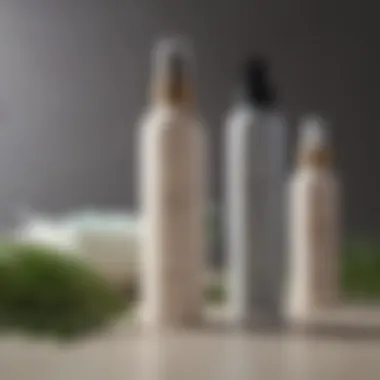

Moisture Retention
Moisture retention is at the heart of why leave-in conditioners are cherished in hair care routines. Dry, brittle strands need hydration to regain their vitality, and this type of conditioner acts like a protective coat to lock in moisture. Users benefit from softer hair, less breakage, and increased elasticity, all thanks to the humectants that draw moisture from the air and bind it to the hair. When applying a leave-in, the hydration it provides ensures that your hair feels less like straw and more like silk. It’s an affordable way to combat dryness.
Detangling Properties
The detangling properties of leave-in conditioners also cannot be overlooked. For those with long or curly hair, the mere act of running a brush through can feel like a monumental task. Enter leave-in conditioners, which ease that burden, making combing or brushing smoother and more manageable. This benefit is essential in reducing the risk of mechanical damage during styling. When hair tangles less, it is more likely to stick around instead of breaking off.
Heat Protection
Heat protection is another crucial aspect of leave-in conditioners. With the widespread use of blow dryers, curling irons, and flat irons, many individuals overlook the damage these tools can inflict without a shield. A good leave-in conditioner preps the hair for heat application, reducing the likelihood of further damage. Users appreciate that they can style their hair while minimizing that burning smell, a sign of damage. This nearly acts like sunscreen for your hair, warding off the harmful rays of styling heat.
Enhanced Manageability
Lastly, enhanced manageability is a significant draw. After using a leave-in conditioner, many find that hairstyling becomes less of a chore. Hair tends to be less frizzy, and styles hold better. For those looking to keep their 'do looking fresh, a leave-in not only makes it easier to work with but also contributes to that polished finish. It allows hair to bounce back from the wear and tear of daily styling, making it a wise choice for maintaining a healthy look.
Key Ingredients to Look For
Natural Oils
Natural oils are essential in many leave-in conditioners and can provide a host of advantages. Whether it’s coconut, argan, or jojoba oil, these ingredients nourish hair and add shine without the weight of silicones. Many users turn to natural oils because they often penetrate the hair cuticle, offering deep nourishment. They're like the cherry on top for hydration. However, one must be cautious, as some oils can cause greasiness if overapplied.
Proteins and Amino Acids
Proteins and amino acids are another crucial component. They serve to strengthen hair, repairing the structural damage from within. For those with color-treated hair that has weakened over time, the addition of these ingredients can mean the difference between healthy locks and frayed ends. They act like personal trainers for your hair—boosting strength and helping it bounce back. However, too much protein can lead to stiffness, so it’s important to find a balanced formulation.
Humectants
Humectants are vital for moisture retention, attracting moisture from the environment into your hair. Ingredients like glycerin and panthenol are common culprits. They ensure your hair stays hydrated throughout the day, which is fundamental for revitalizing damaged hair. While they are effective, the downside is that during very dry conditions, they might draw moisture out of the hair instead, leaving it feeling parched.
Vitamins and Antioxidants
Lastly, vitamins and antioxidants play a complementary role. They protect hair from damage caused by free radicals and environmental stressors. Vitamin E, for example, is well known for its protective qualities and works to keep hair healthy over the long haul. While they are beneficial, their concentration can vary, and some products may not include adequate levels to make a significant impact.
Criteria for Selecting the Best Leave-In Conditioner Spray
Choosing the right leave-in conditioner spray can feel like searching for a needle in a haystack, especially when there are so many options available. Understanding the specific criteria to consider is crucial in cutting through the clutter. Not only does it help you pinpoint what your hair truly needs, but it also ensures that the product you choose delivers on its promises. Key elements in selecting the best leave-in conditioner spray include your hair type, the product formulation, and the specific benefits it offers.
Hair Type Considerations
Fine Hair
Fine hair often needs a bit of extra TLC, as it's more prone to looking limp or oily quite fast. This hair type is delicate and can easily be weighed down by overly heavy products. Thus, selecting a lightweight leave-in conditioner is key. Look for sprays designed to add volume without feeling greasy. These products typically have a finer consistency and can enhance manageability while offering a boost of hydration. Fine hair can also be susceptible to breakage; hence, conditioners that incorporate proteins as key ingredients can significantly fortify each strand.
Curly Hair
Curly hair has a wonderful personality of its own, often requiring extra moisture to maintain its natural shape and bounce. The structure of curly hair makes it more susceptible to dryness, meaning a nourishing leave-in conditioner is a must-have in any curl care routine. Look for sprays infused with hydrating elements and natural oils that also define curls while fighting frizz. The unique feature with curly hair is the need for products that are not only moisturizing but also provide enough hold without being sticky or heavy, allowing each curl to maintain its shape.
Color-Treated Hair
When you've invested in color-treated hair, keeping those vibrant hues intact can be a challenge. This hair type deserves a leave-in spray that not only hydrates but also protects against fading and damage. Look for leave-in conditioners that are specifically formulated for color-treated hair. These sprays usually contain UV filters and antioxidants, which protect from environmental stressors. A distinctive element of such products is their dual purpose; they not only condition but also help maintain the color's vibrancy, making them essential in color care.
Thick Hair
Thick hair has its advantages and disadvantages; it can hold styles well but often requires a bit of extra effort to tame it. For leave-in conditioners, thicker formulations can be particularly useful, as they can penetrate the hair shaft better and provide deeper conditioning. Look for sprays with a richer consistency that offers superior hydration without making the hair feel heavy. The key characteristic of thick hair is its ability to absorb product, so choose a leave-in spray that can deliver the necessary nutrients and moisture to prevent dryness and frizz.
Product Formulation
Aerosol vs. Pump Sprays
When it comes to the method of application, aerosol versus pump sprays can make a difference in how the product is distributed on your hair. Aerosol sprays tend to give a fine mist that allows for an even distribution, which can cover larger areas with less product. However, pump sprays often provide a more concentrated application, which might be beneficial if you're targeting specific areas or need to coat stubborn tangles. Understanding how each type disperses the product can guide your choice based on your hair's specific needs.
Weight and Consistency
The weight and consistency of the spray can determine its efficacy. Lightweight sprays are generally suitable for fine hair, as they hydrate without the build-up. Heavier formulations often work better for thicker or curlier hair types, which can absorb and fully benefit from them. It's crucial to understand your hair's thickness and texture when selecting the right weight of leave-in conditioner—this can either enhance or detract from your overall hair care results.
Natural vs. Synthetic Ingredients
The debate over natural versus synthetic ingredients continues to garner attention among consumers. Natural ingredients often win favor due to their perceived gentleness and enviro-friendly attributes. However, synthetic ingredients can be very effective in delivering hydration and protection. For damaged hair, it may be beneficial to strike a balance, using leave-in conditioners that combine both types of ingredients. This conscientious selection can offer nourishment while avoiding potential irritations from certain synthetic compounds.
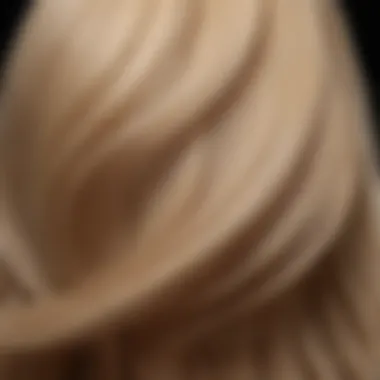

When selecting a leave-in conditioner, recognizing the specific needs of your hair type and understanding product formulations can lead to significantly improved hair health and appearance.
Recommended Leave-In Conditioner Sprays for Damaged Hair
Choosing the right leave-in conditioner spray is crucial in the journey of restoring damaged hair. Each product in this segment is tailored to meet specific needs, addressing the unique challenges posed by damaged strands. These sprays can be a game changer, helping to infuse moisture, reduce breakage, and enhance overall hair health. When selecting a leave-in conditioner, folks should consider elements like their hair type, the ingredients in the spray, and any specific damage they need to address. In this section, we will explore some standout products known for their effectiveness, followed by a comparison based on various important factors.
Top Products Overview
Product A: Features and Benefits
This product lives up to the hype when it comes to its moisturizing power. It contains a blend of natural oils, which work wonders for hydration. One key characteristic is its lightweight formula that doesn’t weigh hair down, making it a popular choice for users with fine hair. The unique feature here is its ability to also double as a heat protectant, which is likely a big plus for those who frequently style their hair with heat tools. However, some users may find its scent too strong, but it does dissipate after application.
Product B: Features and Benefits
This spray is notable for its rich infusion of proteins and amino acids. It targets the structure of damaged hair, effectively reinforcing it from within. The key to its popularity lies in its versatility; it works on all hair types but is particularly effective for curly hair that needs extra moisture. A distinct advantage is its dual action of treating and styling the hair, but on the downside, it can feel a bit sticky when applied in larger quantities.
Product C: Features and Benefits
Here’s a spray that buzzes with all the right elements for enhancing manageability. Its standout characteristic is bioavailable vitamins and antioxidants, which promote healthy hair growth and resilience against environmental factors. Users rave about how it reduces frizz and extends the longevity of hairstyles. This product shines with its quick absorption formula, yet it may not provide enough moisture for very dry, coarse hair types.
Comparison of Effectiveness
Moisturizing Properties
The moisturizing properties of a leave-in conditioner are what sets the best apart from the rest. A good spray should not only hydrate the surface but deeply penetrate the hair to lock in moisture and supple the cuticle. Many noteworthy products include humectants like glycerin and aloe vera, attracting moisture to the hair. This is essential for revitalizing dry, brittle hair, making the right moisturizing capability a vital consideration.
Repair Capabilities
Repair capabilities are another critical factor when evaluating leave-in conditioners. These products often contain proteins that can bind to damaged areas, effectively patching them up temporarily. It’s interesting to note the varying degrees of efficacy across different brands; some provide noticeable improvement within a week, while others might take a few applications before the benefits become clear. Thus, readers should closely examine what each product claims versus real-world results.
User Feedback and Reviews
User feedback provides a wealth of information regarding any product’s real-life effectiveness. A common thread in reviews these days discusses ease of use, texture on the hair, and whether users see tangible results. Many products will come packed with positive reviews from people who've seen a significant change in their hair texture and look after consistent use. However, it’s essential to filter through some reviews that might seem exaggerated; focusing on patterns from genuine users often gives the most accurate reflection of a product's reliability.
Proper Application Techniques
Proper application techniques are crucial in the quest to restore and revitalize damaged hair with leave-in conditioner sprays. How you apply these products can mean the difference between a lifeless mane and a shiny, healthy-looking crown. Understanding the nuances between pre-wash and post-wash application is key, as well as knowing the right layering techniques, quantity to use, and when to apply your conditioner. The objective is simple—to lock in moisture, protect strands, and promote overall hair health.
Pre-Wash and Post-Wash Application
Layering Techniques
Layering techniques refer to the method of applying multiple products to your hair in a specific order to maximize benefits. This approach is vital because correct layering can enhance the effectiveness of the leave-in conditioner. A popular choice might be to start with a leave-in spray, followed by a light styling cream or oil. Each product serves its purpose and helps seal in moisture more effectively.
One key aspect of layering is protecting the hair cuticle. The outer layer of hair can more easily absorb the goodness of your conditioners when they're layered properly. However, it’s essential to find the right balance; too many products can lead to buildup, weighing your hair down.
Quantity to Use
The amount of leave-in conditioner you use makes a significant difference. Many folks think that more is better, but using too much can lead to greasy or sticky hair. Generally, a small amount is best—about a quarter-sized dollop for medium-length hair is a good starting point. The goal is to coat hair lightly without overwhelming it.
Finding the right quantity is often a bit of experimentation. If your hair feels heavy or slick, cut back the amount you apply. On the flip side, if your hair feels dry or tangles easily after use, you might need to up your dosage a bit.
Timing and Frequency
Timing and frequency play a crucial role in how well your leave-in conditioner works. Applying your spray immediately after towel-drying helps lock in some of that moisture. And when it comes to frequency, many experts suggest using a leave-in conditioner every wash to maintain hydration, especially if your hair is prone to dryness.
However, your individual hair type plays a role. If your hair is fine or oily, you may find that using a leave-in every other wash does the trick. It’s about matching the product to your specific hair needs.
Additional Styling Tips
Combining with Other Products
Combining your leave-in conditioner with other products can create a powerful blend to enhance shine and manageability. For instance, mixing it with a curl cream can help define natural curls while keeping them moisturized. However, it's best to remember that not all products may play nicely together.
Taking care to test a small amount of the combination on a few strands can prevent mishaps. Find synergy between your products and amplify the benefits rather than suppressing them.
Heat Styling Considerations
Heat styling can wreak havoc on already damaged hair. Therefore, if you intend to use heat tools, it’s wise to choose a leave-in conditioner that offers heat protection. Applying such a product before styling can shield your hair from high temperatures, reducing breakage.
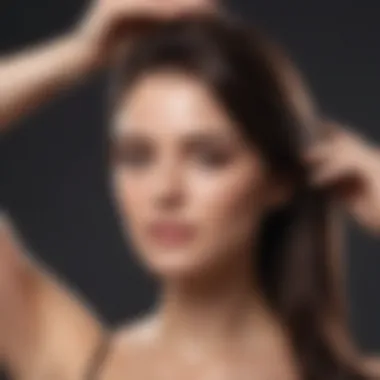

Nonetheless, always try to limit your use of heat styling tools. Consider air-drying when possible, and use tools with adjustable heat settings to maintain hair integrity.
Protective Styles
Protective styles refer to hairstyles that shield the ends of your hair strands, minimizing their exposure to environmental stressors. This not only preserves hair health but also aids in retaining moisture. Braid-outs, buns, or even twists are great examples of protective styles.
Identifying Individual Hair Needs
Understanding the specific needs of your hair is like navigating through a maze—each turn leads you closer to your destination, or in this case, to healthier hair. Identifying individual hair needs is crucial for selecting the right leave-in conditioner and can make a world of difference in how your hair responds to treatment. With the right knowledge, you can tailor your hair care routine, ensuring that every product you use adds value rather than causing further damage.
Hair is as diverse as people, each strand telling a unique story. The key here is to listen to your hair. Knowing whether your locks are porous or coarse, dry or oily, determines how they will react to various leave-in conditioners. This understanding informs not just product selection but also application frequency and techniques, maximizing positive outcomes and minimizing trial and error.
Assessing Hair Health
A thorough assessment of your hair's health is the first step in addressing its needs. This involves several approaches.
Conducting a Hair Strand Test
Conducting a hair strand test is a practical way to gauge the condition of your hair. This test entails pulling a single hair strand from a discreet spot, usually near the nape, and inspecting it closely. The primary goal of this test is to determine the porosity and strength of your hair.
If the hair stretches without breaking, it indicates good elasticity. On the other hand, if it snaps easily, your hair may be brittle and undernourished. This can guide you in choosing leave-in conditioners rich in moisture and strength.
The unique feature of this method lies in its simplicity. It’s an at-home test that doesn’t require special equipment or professional help, making it both accessible and low-cost. However, one downside is that it may not provide a complete picture of your hair's health, as it only focuses on a small sample.
Observing Response to Products
Observing how your hair reacts to different products is an integral part of determining its needs. After switching to a new leave-in conditioner or any product, keep an eye on changes. Are your strands feeling more hydrated or, conversely, do they appear oily? This key characteristic of monitoring responses can help you pinpoint which ingredients are beneficial and which aren't.
The unique feature here lies in the trial-and-error aspect, which is genuinely informative. While it may take time to find just the right product, the payoff is worth it when your hair starts looking and feeling healthier. On the flip side, the downside here is the potential for hair overload, where your strands may not react positively to several new products introduced at once.
Consulting with Professionals
Consulting with professionals is another effective approach to understanding your hair needs. A hairstylist or trichologist can offer insights based on their expertise and experience. This key trait of professional consultation is that it often results in personalized recommendations based on a detailed examination of your hair type and scalp condition.
The unique aspect of this method is the access to expert-level insights and potentially better product recommendations than what you may gather from online reviews alone. That said, consulting can be costly, and not everyone may have the time to commit to regular visits.
Adjusting Your Routine
Once you've identified your hair's needs, the next step is adjusting your hair care routine. Not all hair needs the same level of product application or frequency.
Frequency of Use
The frequency of use of leave-in conditioners should be aligned with your hair’s specific needs. Some hair types thrive on daily hydration, while others may only need it a few times a week. Noting this can save you money and hassle.
By finding a comfortable balance, you can ensure your strands get the moisture they crave without being weighed down. However, it’s vital to note that overusing even the best products can lead to buildup over time, which can further complicate your hair care struggle.
Complementary Treatments
Complementary treatments can also enhance your hair’s overall health. For instance, using oils or masks in tandem with leave-in conditioners can address specific needs, like dryness or damage. This key point emphasizes a holistic approach to hair care, which is not just about the leave-in conditioner but also about creating an entire regimen tailored to your individual hair characteristics.
Though adding multiple treatments can seem daunting, many people find their hair benefits significantly from multiple sources of nourishment. The downside is that it might take a bit of time to establish an adequately integrated routine that suits your hair best.
Monitoring Progress
Lastly, keeping an eye on your hair's progress ensures you stay on the right track. Track changes in your hair’s health and appearance over time, adjusting products as needed. This process of monitoring progress plays a vital role in your journey towards healthier hair.
The unique feature of this aspect is the ability to assess what works and what does not continually. However, remember that hair growth is generally a slow process, so patience is key. Focusing on minute changes might be discouraging at times, but persistence pays off.
Individual hair care is not one-size-fits-all. What works for one person may not work for another. Pay attention to your unique hair story.
Epilogue
As we navigate the twists and turns of hair care, it's clear that understanding how to effectively address damaged hair is paramount. The role of leave-in conditioners, particularly sprays, cannot be understated. They offer a crucial line of defense against further damage while promoting healing and revitalization.
The Big Picture
Choosing the right leave-in conditioner spray transcends merely restoring appearance; it plays a vital role in the overall health of your hair. The benefits go beyond surface-level fixes. These sprays are designed to lock in moisture, provide necessary nutrients, and create a barrier against environmental stressors. In focusing on specific ingredients grouped by effectiveness, users can tailor their selections based on individual needs, thus maximizing the treatment process.
"The right leave-in conditioner is like a safety net for your hair, preventing it from falling apart under pressure."
Key Takeaways
- Know Your Hair: Assessing the type and extent of damage is essential. This understanding informs which products will be most beneficial.
- Ingredients Matter: Look for key components like natural oils, proteins, and humectants which can penetrate and nourish the hair shaft effectively.
- Application Technique is Key: Proper application methods can enhance the effectiveness of any leave-in conditioner. Whether it's pre-wash or post-wash application, technique heavily influences results.
- Personalize Your Routine: Adjusting product use based on how your hair reacts can not only optimize health but also empower the individual to take charge of their hair care.
In a world where damaged hair should not hold anyone back from feeling beautiful, understanding the role of leave-in conditioners offers an accessible pathway to revival. Keeping the hair nourished, soft, and resilient is more than a trend—it's a commitment to self-care and a reflection of personal style. As you conclude your journey through the article, consider these insights as the groundwork for healthier hair—a true testament to the effort you put into maintaining it.

